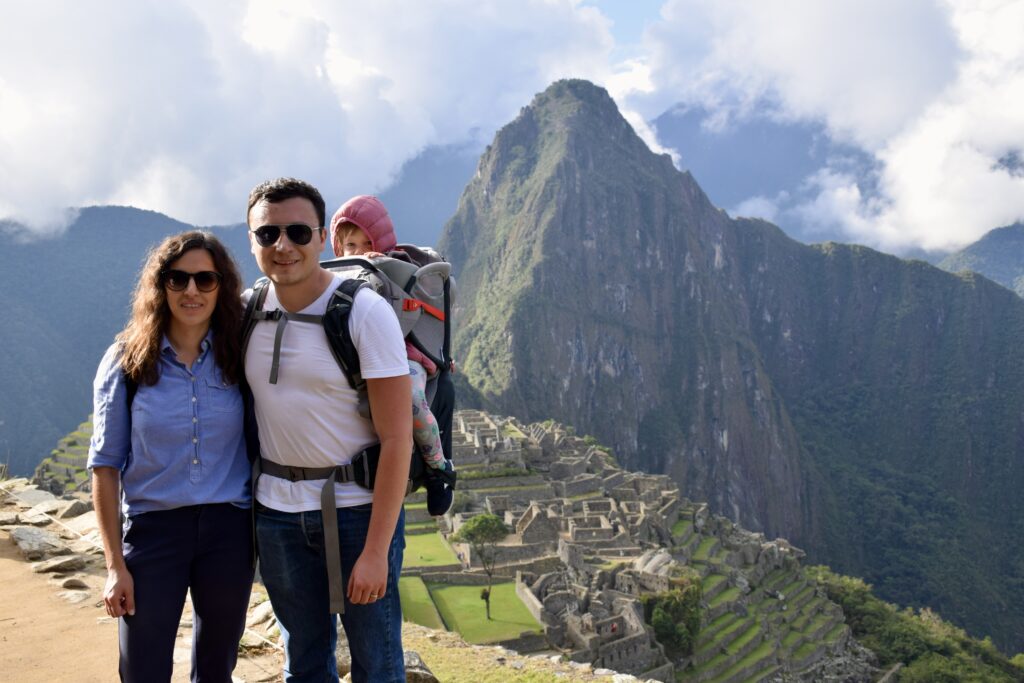
If you’re looking for the perfect Peru itinerary with kids, this 12-day family-friendly guide highlights the best of what the country has to offer. After years of dreaming about Peru, we finally made the trip a reality with our children, and it exceeded every expectation.
As first-time visitors, we wanted to see the top sights like Machu Picchu while also immersing ourselves in authentic Peruvian culture and food.
This itinerary takes you through our favorite family-friendly stops: beginning in Lima for a taste of the capital’s history and cuisine, then flying to Cusco to explore Incan ruins, vibrant markets, and breathtaking landscapes. From the Sacred Valley to the wonder of Machu Picchu, this trip blends history, nature, and culture into one unforgettable family adventure.
Day 1 – Arrival in Lima
We arrived in Lima in early September, landing at Jorge Chávez International Airport. As we decided to stay in the historic center of the city, wanting to be close to the key sites, we picked a hotel near Plaza Mayor, the city’s main square since colonial times.
💡 Good to know
When planning your trip to Peru, remember that this country has different seasons, with August being the coldest winter month and February being the hottest summer month.
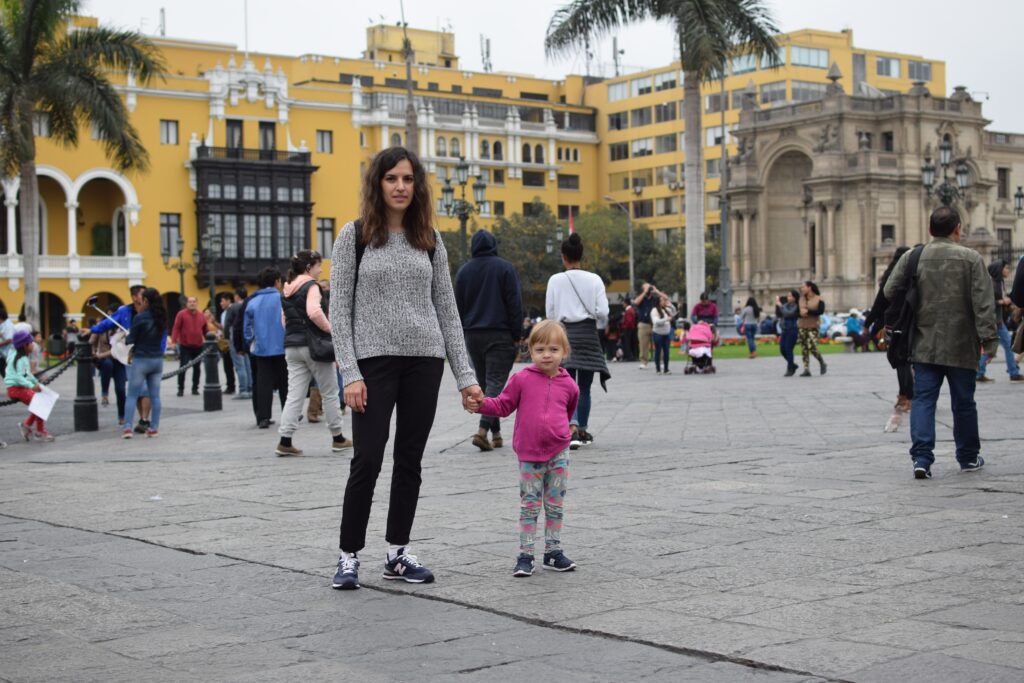
Visit Plaza Mayor de Lima
Plaza Mayor is also known as the Plaza de Armas and has been the center of Lima since it was founded by Francisco Pizarro in 1535. The plaza is surrounded by the Government Palace, the Cathedral of Lima, the Archbishop’s Palace of Lima, and the Municipal Palace.

Dinner at PERÚ GOURMET
After checking in, we headed straight to the main square, excited to start exploring Peru! We had our first taste of delicious Peruvian cuisine and drink at PERÚ GOURMET right on the plaza.

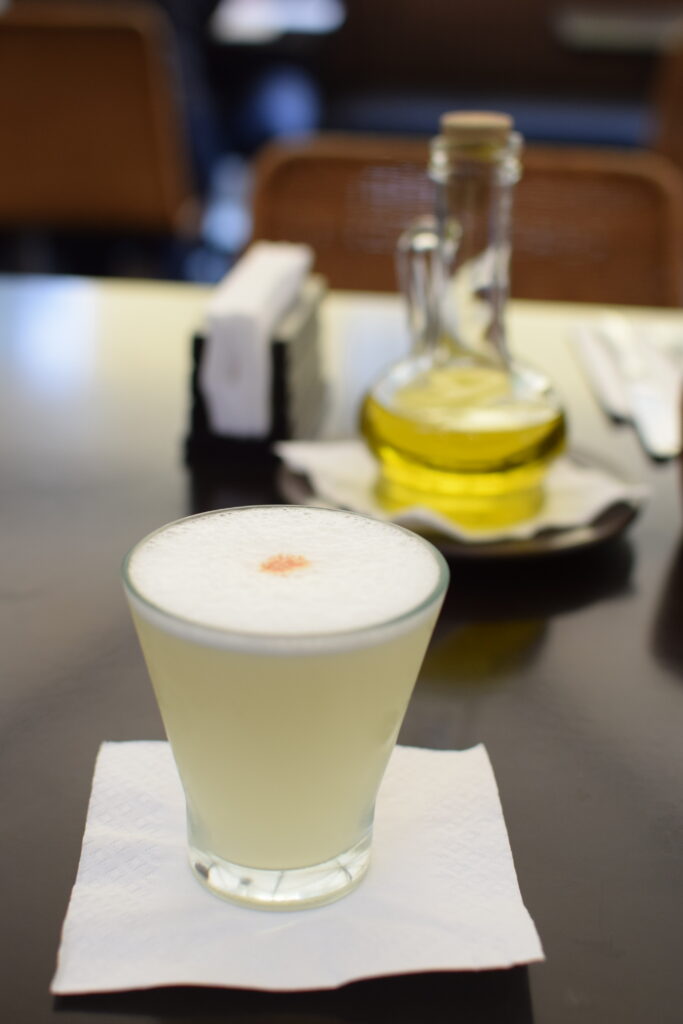
We ordered Pisco Sours, the national drink of Peru, and Inka Cola to cheer the start of our adventure.
After dinner, we went for an evening stroll through the historic streets surrounding the plaza before heading back to our hotel.
💡 Good to know
Some prefer staying in the more modern Miraflores district, but we wanted to stay in the historic center to maximize our limited time in Lima.
Day 2 – Exploring Lima with kids
Visit Plaza San Martin, Lima
On our first full day, after breakfast, we walked to Plaza San Martin, another historic square in central Lima. We spent the day exploring the historic heart of the city on foot.
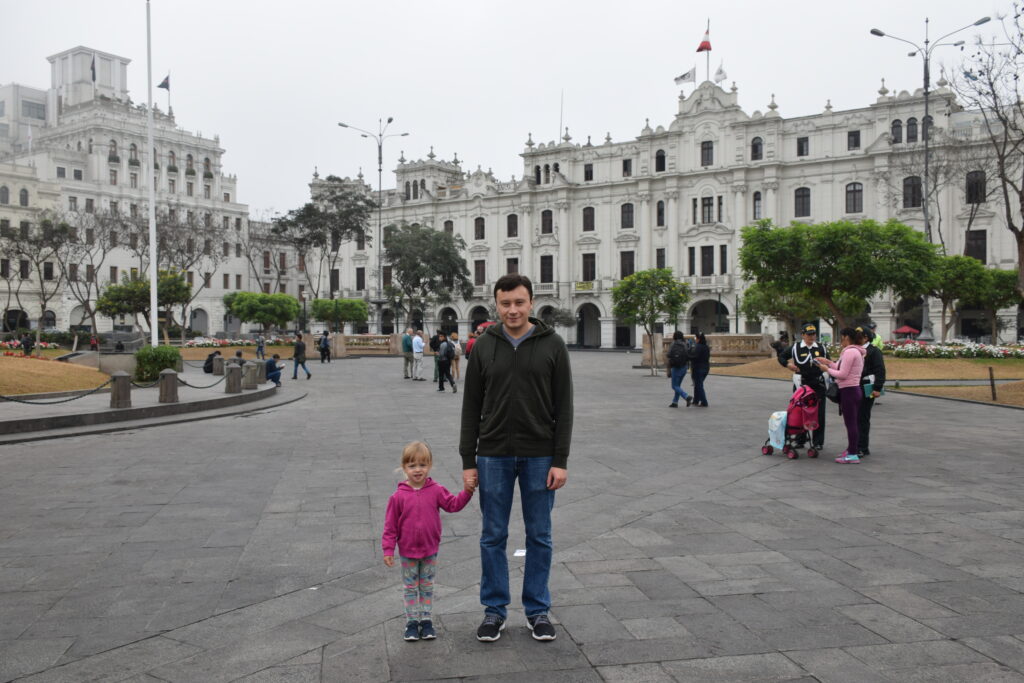
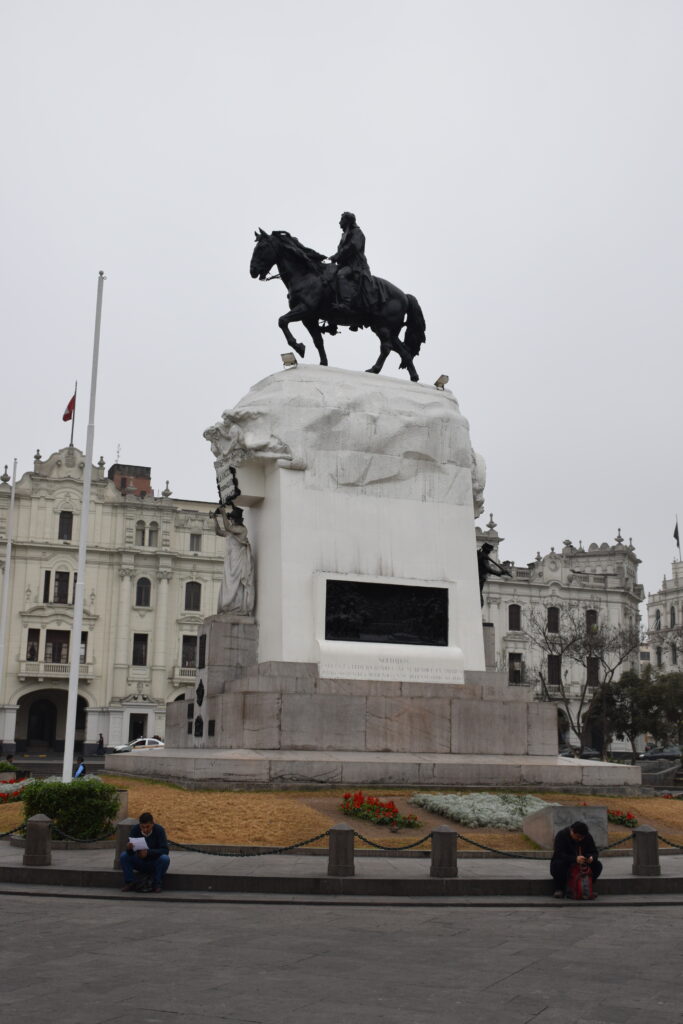
Walk through Jirón de la Unión
One highlight was walking through Jirón de la Unión, the pedestrian street lined with beautiful preserved colonial-era architecture.

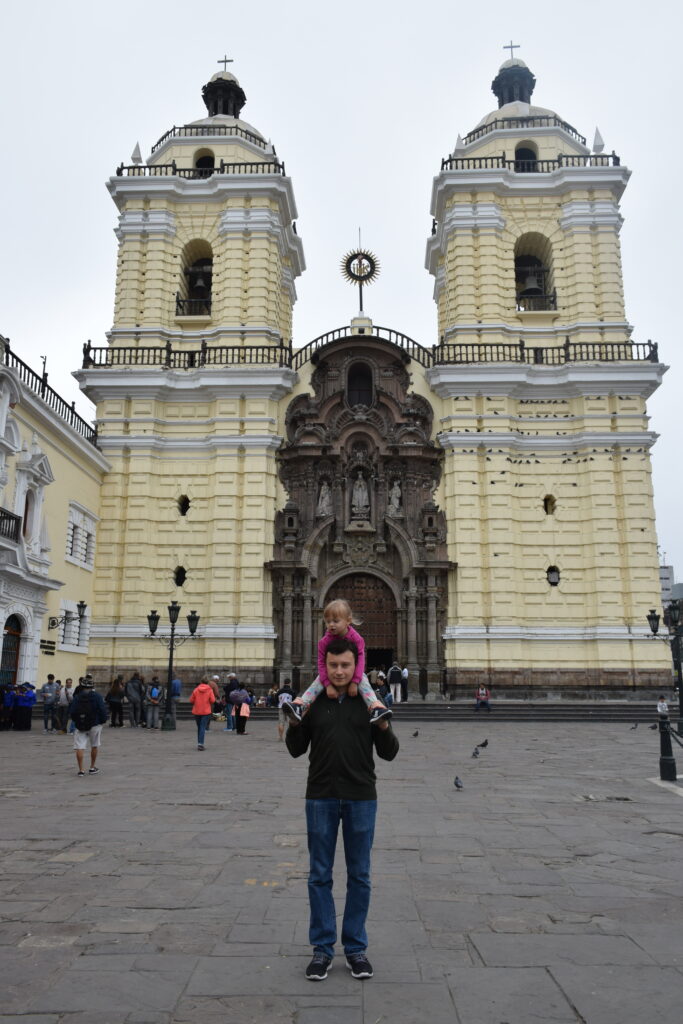
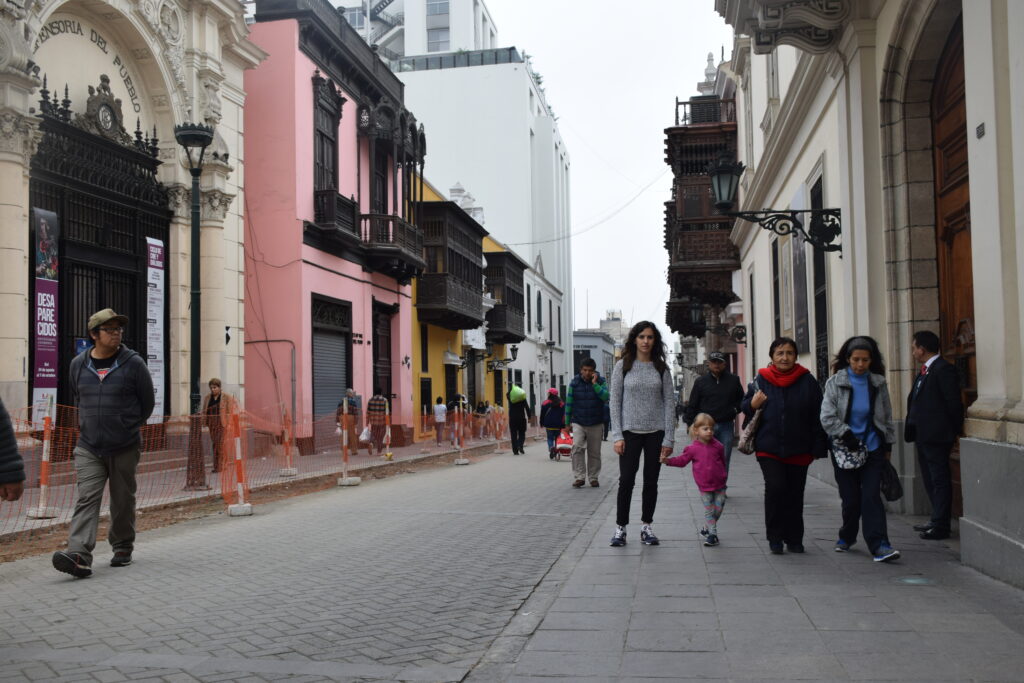
Along the way, we admired the renowned Balconies of Lima dating back to the viceroyalty era in the 16th century.
Day 3 – Flight from Lima to Cusco
In the afternoon, we took a flight from Lima to Cusco on Avianca Airlines. The flight has amazing views of the Andes out the window as you approach Cusco.

Cusco was the historic capital of the Inca Empire and a central hub for our exploration of the region. We arranged a ride to the hotel with one of the local taxi drivers, getting his business card to text him for future rides around town.
We arrived at our hotel in San Blas, a neighborhood with narrow cobblestone streets and artisan shops. Upon arriving at the hotel, we were greeted with cups of coca tea. The hotel staff explained that the coca tea helps prevent altitude sickness.
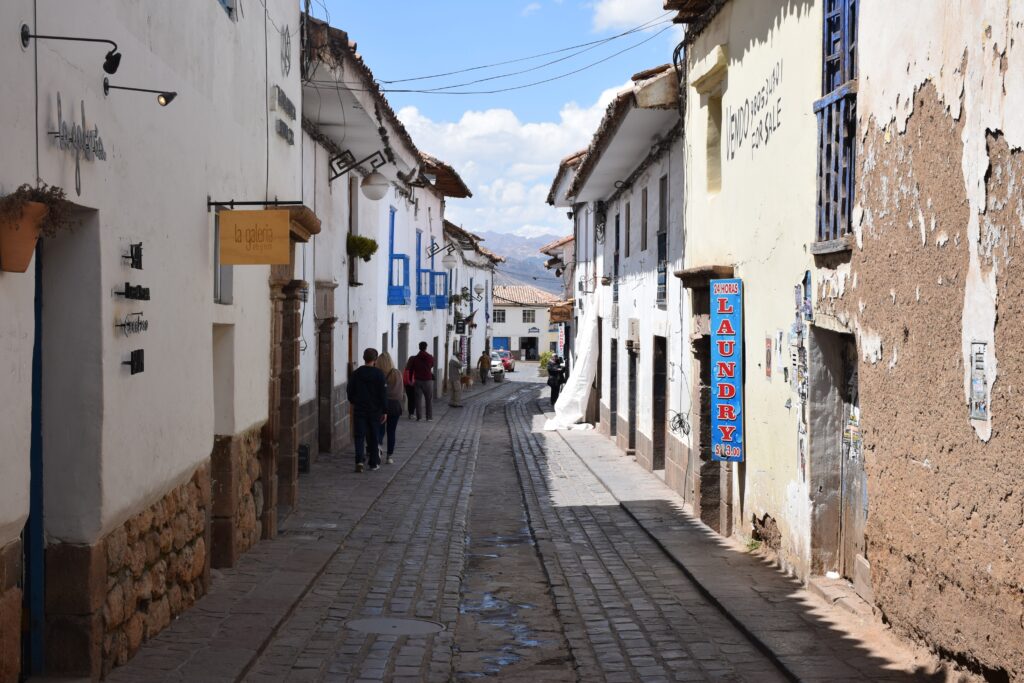
Dinner at Manka restaurant
That evening, we had our first Peruvian feast at Manka restaurant and caught an impressive traditional dance performance.



The colorful, lively music and dance kicked off our time in Cusco perfectly!
Day 4 – Exploring Cusco with kids
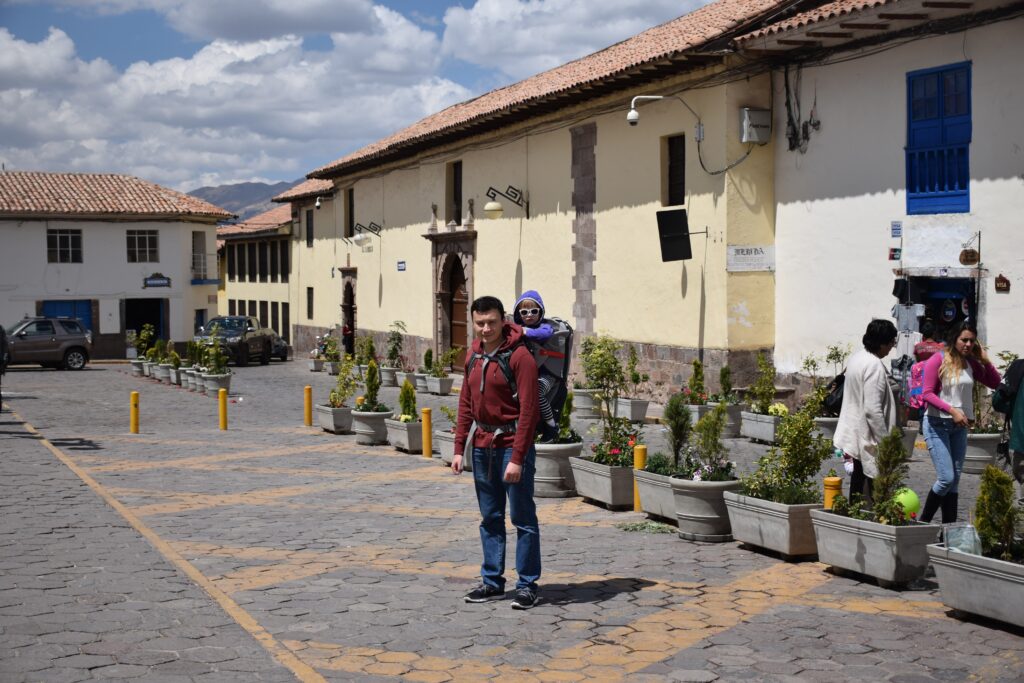
Check out Plaza de Armas, Cusco
On our first full day, we decided to explore the city and walked from our San Blas hotel down to Plaza de Armas, Cusco’s lively main square filled with cafes, shops, and ruins.
💡 Good to know – Adjusting to altitude in Cusco with kids
As Cusco is located at an altitude of 3,399 m / 11,152 ft. above sea level, you are very likely to experience altitude sickness. Symptoms can be mild, with some headache and nausea, or more severe with shortness of breath.
Each person reacts differently, and it is important to take your time to get used to this kind of elevation before starting your exploration.
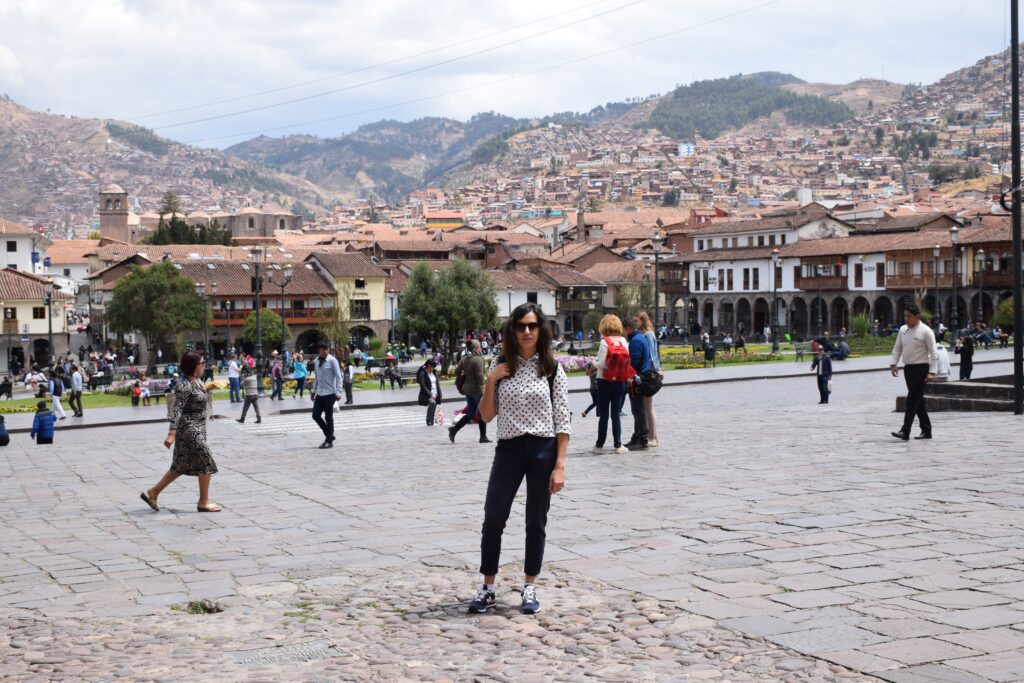
The impressive Catedral del Cusco dominates Plaza de Armas. We were in awe of the ornate cathedral built in the 1500s with its Baroque facade and art. Little Sophia loved looking at the stone carvings around the square.
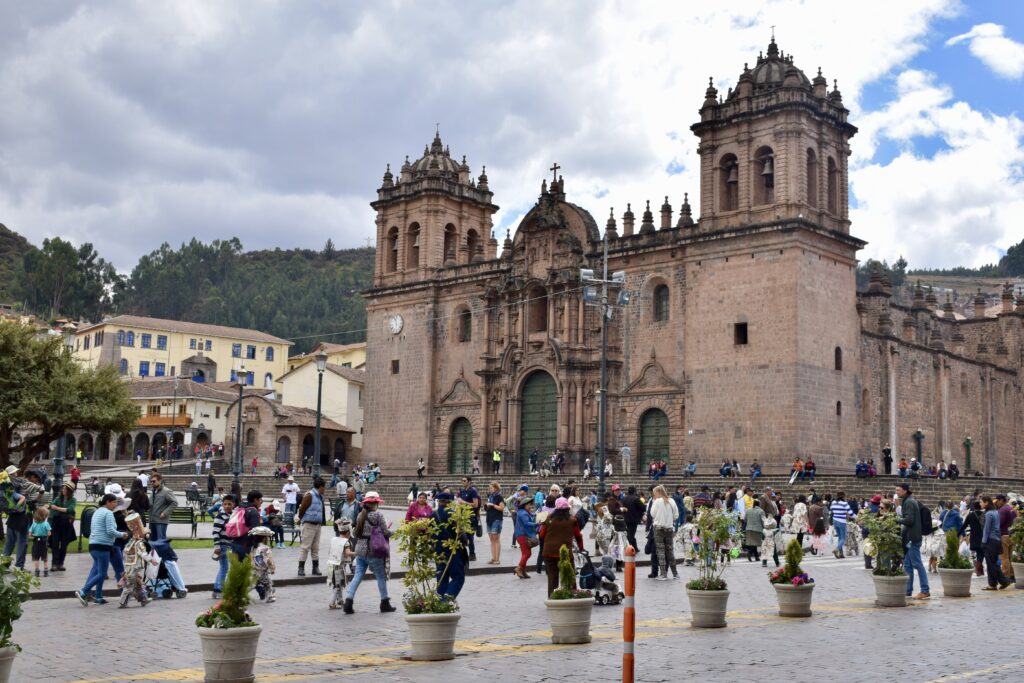
While we were exploring the cobblestone streets on foot, Sophia enjoying the ride in her Osprey Poco child carrier, which was perfect for navigating Cusco’s hilly cobblestones.

Along the way, locals approached, trying to entice us to take pictures with their alpacas (which may have actually been kid goats) for a tip.

Explore Santo Domingo church and the ruins of Coricancha
Other highlights were visiting Santo Domingo church and the ruins of Coricancha, once the most important Inca temple in Cusco.
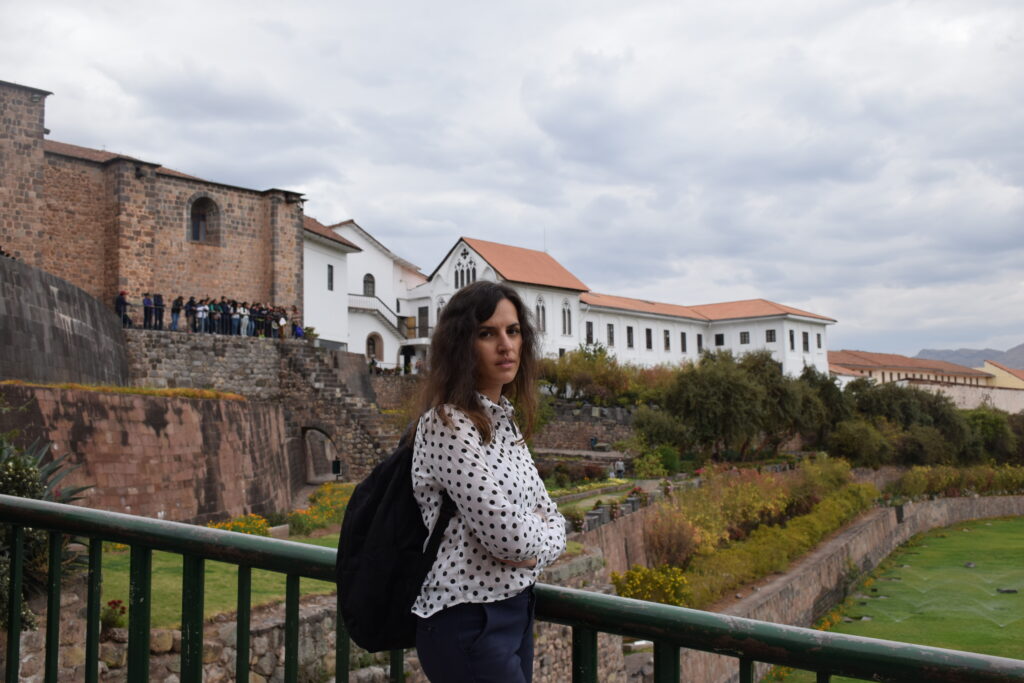

Dinner at Cicciolina Restaurant, Cusco
Located in a charming old colonial house on the streets of Cusco, Cicciolina Restaurant offers a menu of Italian-inspired dishes with a Peruvian twist. We particularly enjoyed the duck prosciutto, ceviche (a Peruvian classic), and scallops!
In our opinion, tapas-style small plates are the best way to savor a variety of dishes, as you can order multiple items and share them with your family.
Day 5 – More of Cusco
Take a walk to Cristo Blanco
On our second day in Cusco, we hiked up to Cristo Blanco, a massive white statue of Christ overlooking Cusco. The hike was challenging due to the elevation but worth it for the sweeping views of the city. No tickets or entrance fees were required here.


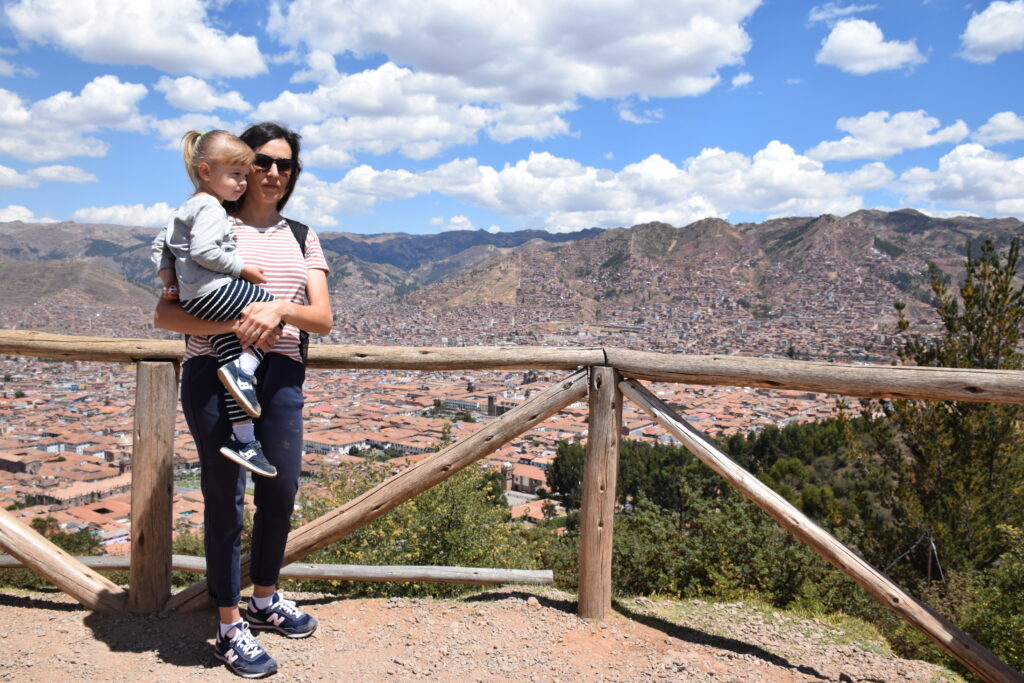
Visit Sacsayhuamán
We also explored the ruins of Sacsayhuamán, the famous Inca citadel just outside Cusco. This site was built by the Incas in the 15th century and nowadays is recognized on the UNESCO World Heritage List.
The cost of entrance is included with the Cusco Tourist Ticket for foreign visitors. It costs 130.00 Soles (approximately $36) and is valid for ten days, allowing entry to 16 tourist sites.
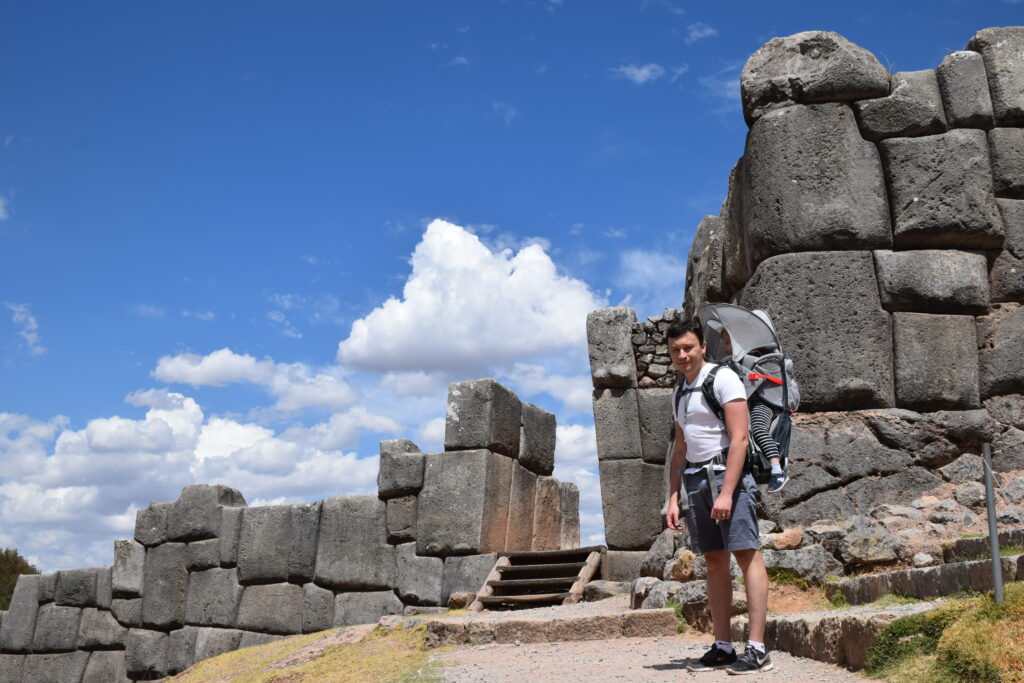
We loved walking around the massive stone walls and terraces; impressive!
Dinner at República del Pisco
After all that walking, we were ready for an amazing dinner at República del Pisco to try more of Peru’s famous cuisine and pisco cocktails.
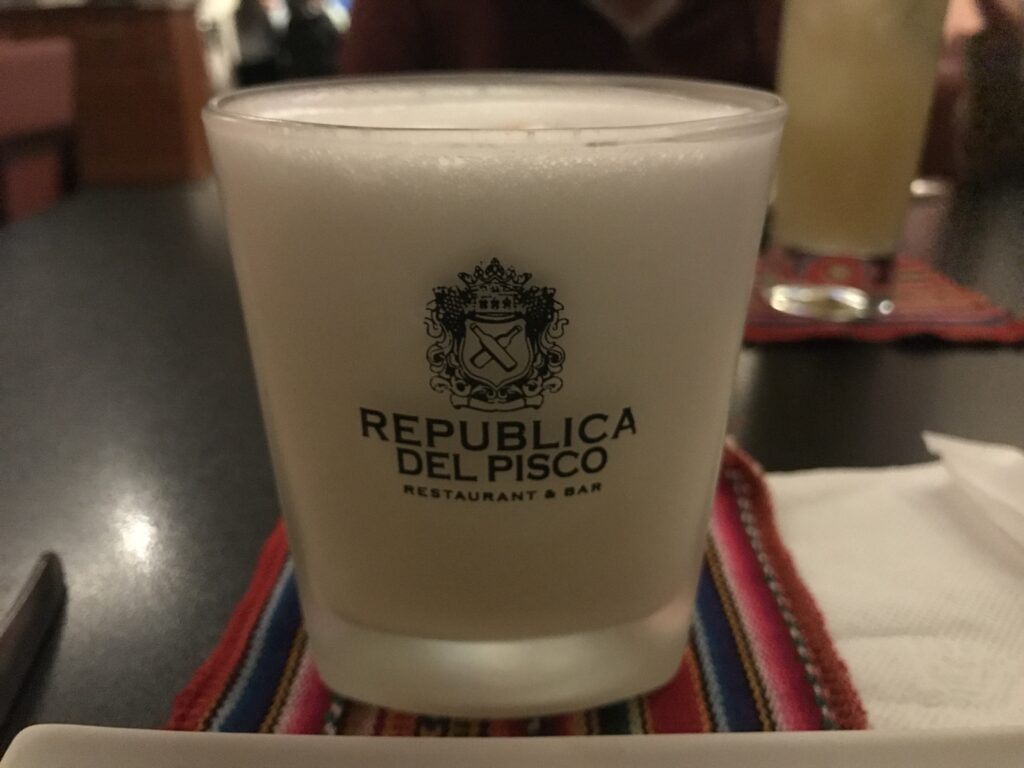
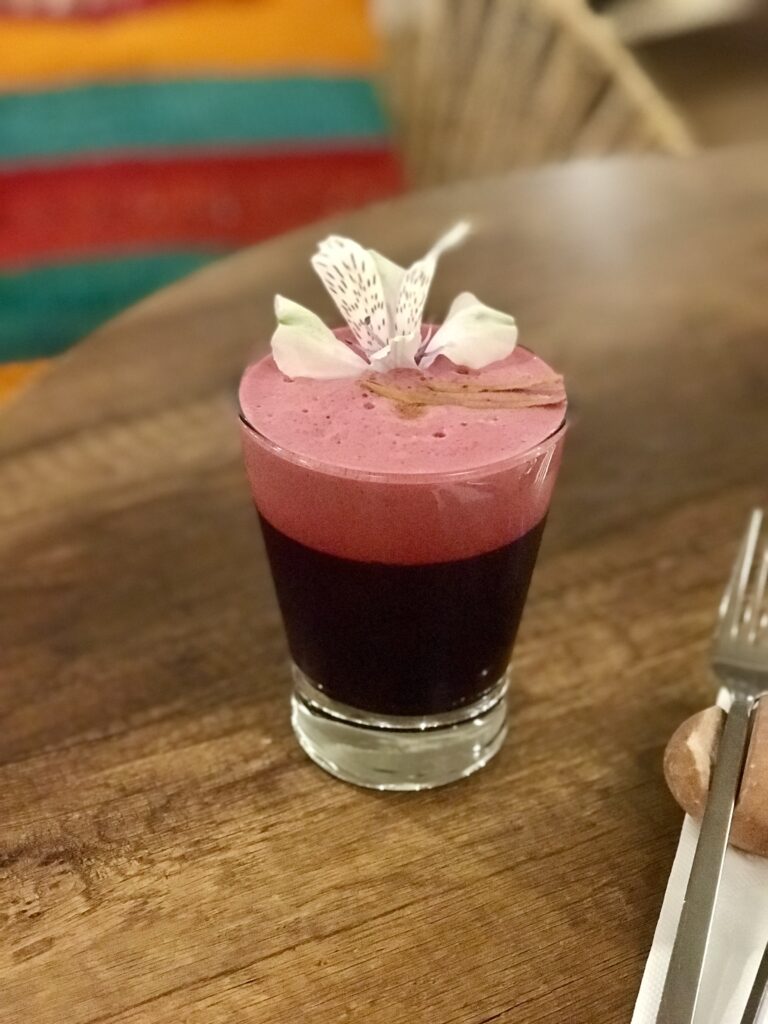
Day 6 – Getting to Ollantaytambo from Cusco
After a few days of getting acquainted with Cusco, it was time to begin our journey to see Machu Picchu! We stored our main luggage at our hotel (since we were returning to Cusco) and took a taxi to Ollantaytambo, northwest of Cusco. It took us around 1.5 hours to get to Ollantaytambo from Cusco.

We checked into El Albergue in Ollantaytambo after grabbing lunch at Inka’s Tower restaurant in town and then ventured to explore the remarkable Inca ruins of Ollantaytambo.
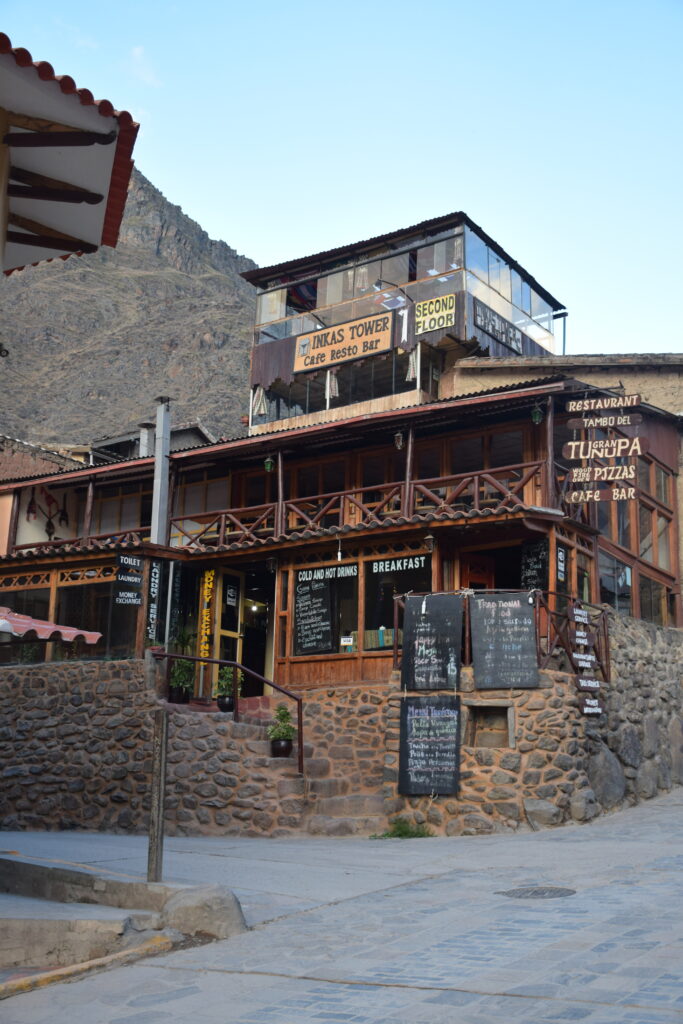
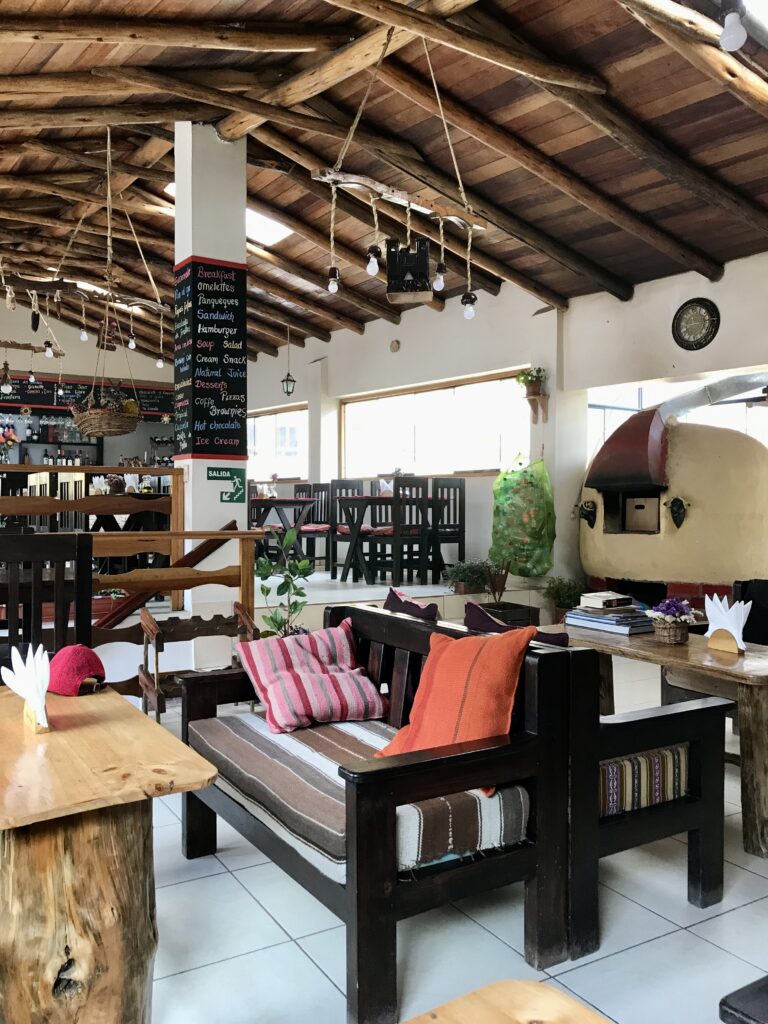
The good news is that Ollantaytambo’s elevation is lower than at Cusco, at an altitude of 2,792 m. (9,160 ft.). So, if you were having altitude sickness in Cusco, you might feel better here.
Explore Inca ruins of Ollantaytambo
The Inca ruins of Ollantaytambo are an impressive example of Inca urban planning and construction. This site served as a ceremonial center and fortress during the Inca empire, featuring terraced hillsides, towering stone walls, intricate water channels, and the impressive Temple of the Sun.
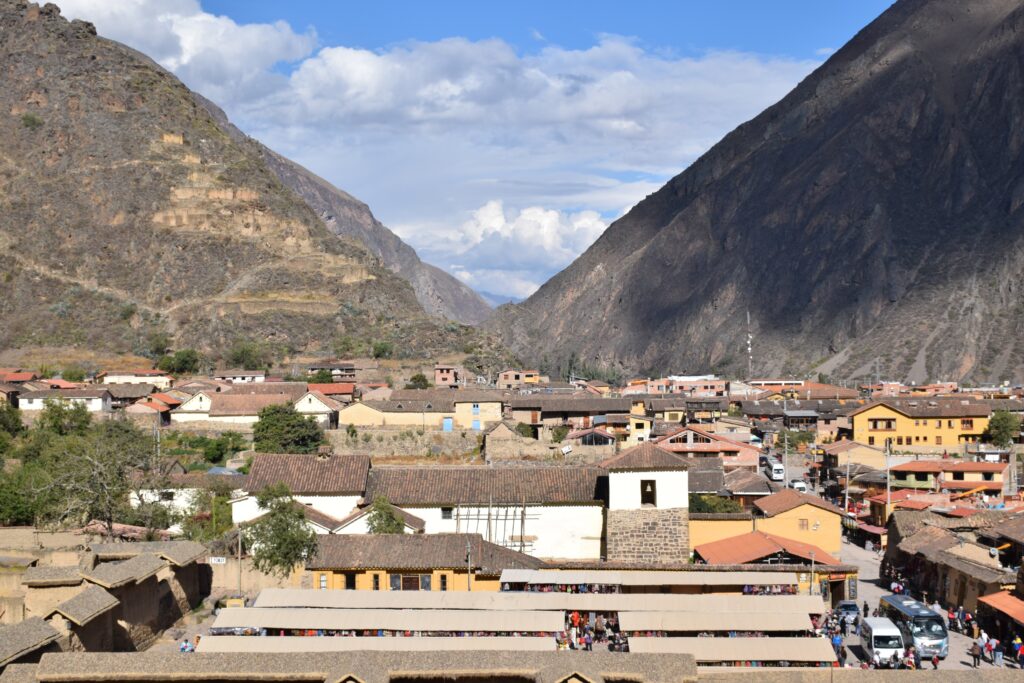
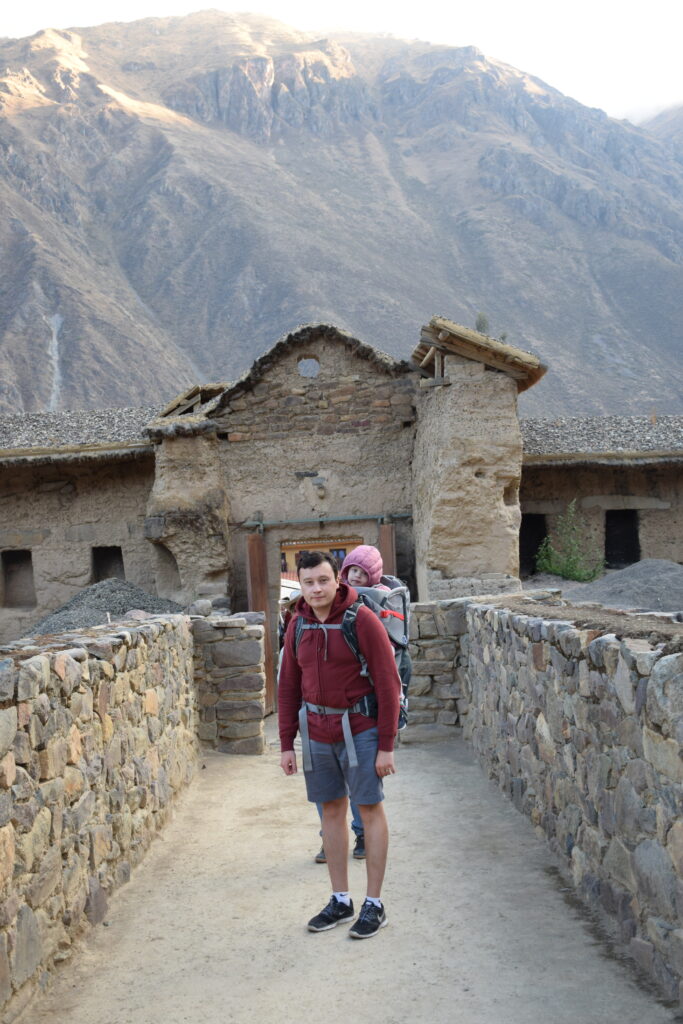
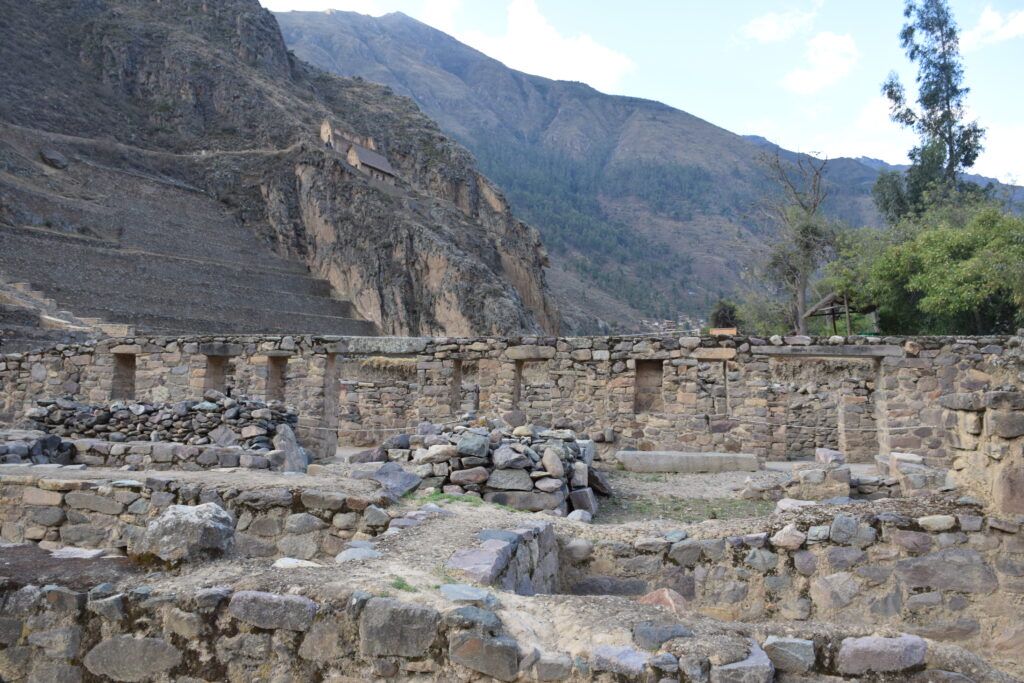
The site is also a significant cultural and spiritual center for the local Quechua people. A visit to Ollantaytambo is a must for anyone who appreciates stunning architecture and the incredible achievements of the Inca civilization.
The entrance to the ruins is included with our Cusco Tourist Ticket.
For dinner we headed to one of the many restaurants lining Ollantaytambo’s charming Plaza de Armas to rest up before our early morning train to Aguas Calientes next.
Day 7 – Getting to Machu Picchu from Ollantaytambo
💡 Good to know
There are several ways to get to the famous Machu Picchu:
- One of the most popular ways is to take the train from Cusco or Ollantaytambo. This train ride is known for its beautiful views of the Andes Mountains and the Urubamba River.
- Another option is to hike the Inca Trail, which is a 4-day trek that takes you through stunning Andean landscapes and ancient Incan ruins before arriving at Machu Picchu.
- For those who want a more relaxed and scenic journey, there are also several bus tours that take visitors to Machu Picchu while stopping at various scenic points along the way.
After an early wake-up call we took the train from Ollantaytambo to Aguas Calientes, the jumping-off point for Machu Picchu. The glass-ceiling train follows the Urubamba River and has incredible views of the valley along the way.
💡 Good to know
When leaving from Ollantaytambo, the train ride to Machu Picchu takes approximately 1.5 hours. Prices vary based on the class of service:
- With Expedition being the most affordable, starting at around $70 per person one-way.
- Vistadome starts at around $100 per person one-way, offering larger windows and more comfortable seating.
- For a premium experience, the Belmond Hiram Bingham train offers gourmet meals, live entertainment, and an open bar, starting at around $500 per person one-way.
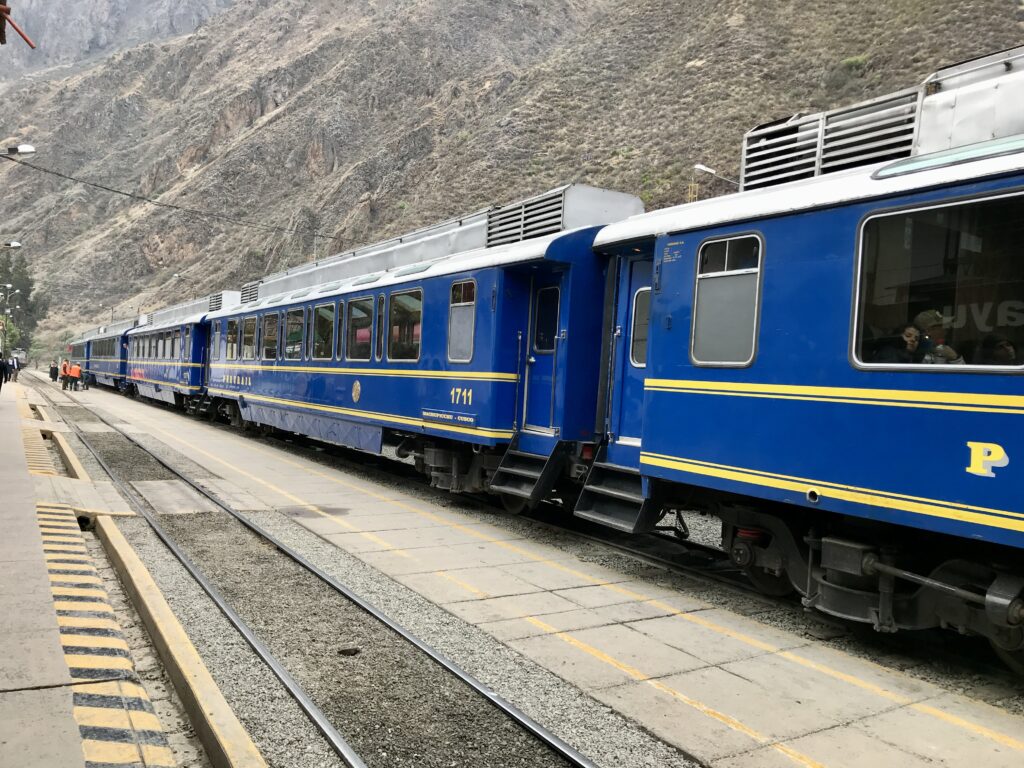
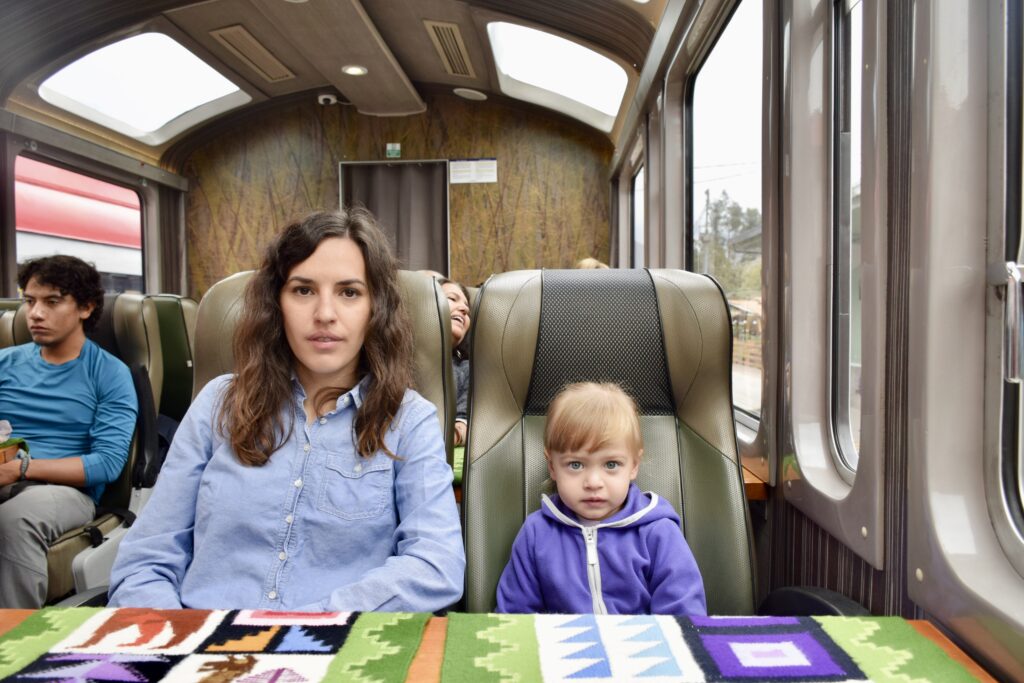
The highlight of the whole trip was finally exploring the magnificent ruins of Machu Picchu! After a quick bite in Aguas Calientes, we took the bus up the switchbacks to the famous ruins, which were mysteriously abandoned by the Incas in the 1500s.
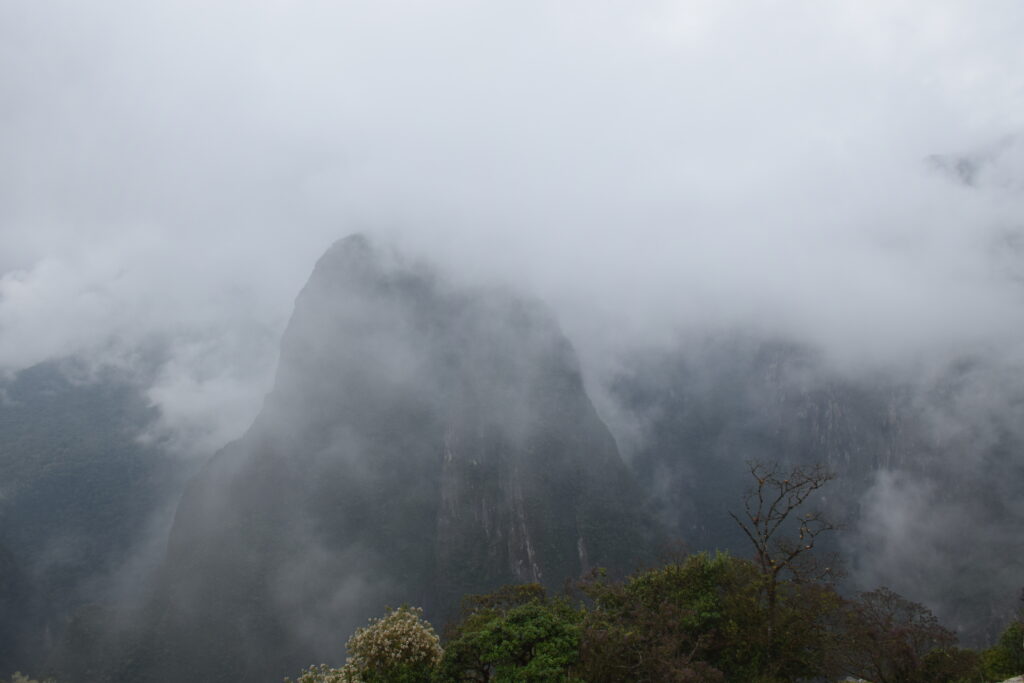
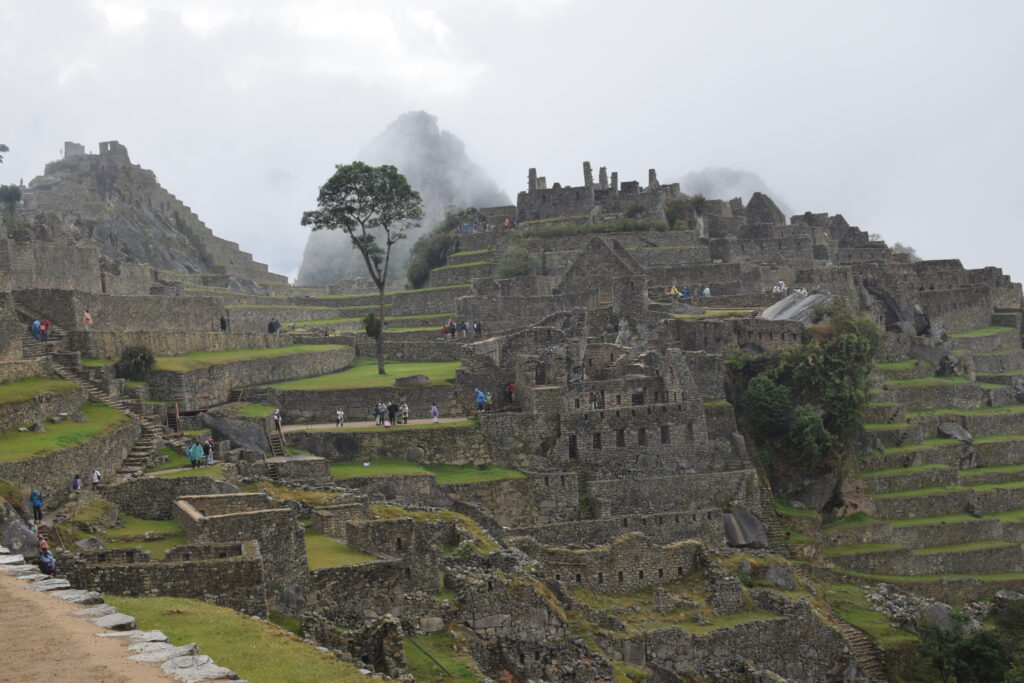
When we first arrived everything was disappointingly foggy. But after hiking up to the lookout point, the fog miraculously cleared, granting us jaw-dropping views of Machu Picchu in its full glory!

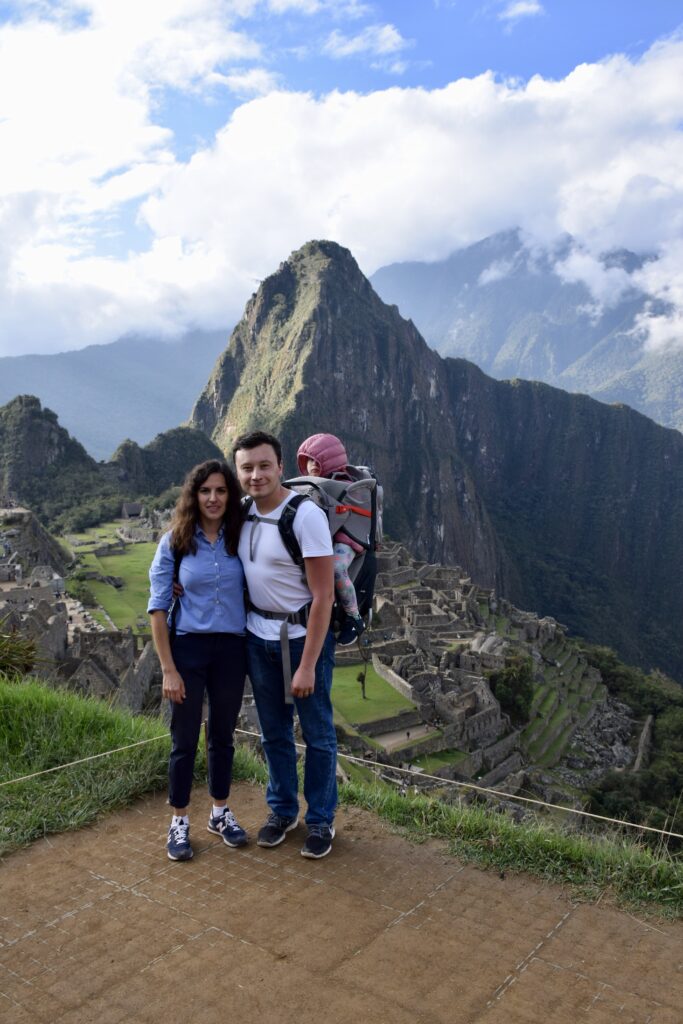
We spent hours exploring this bucket list site, with Sophia enjoying front-row views from her carrier.

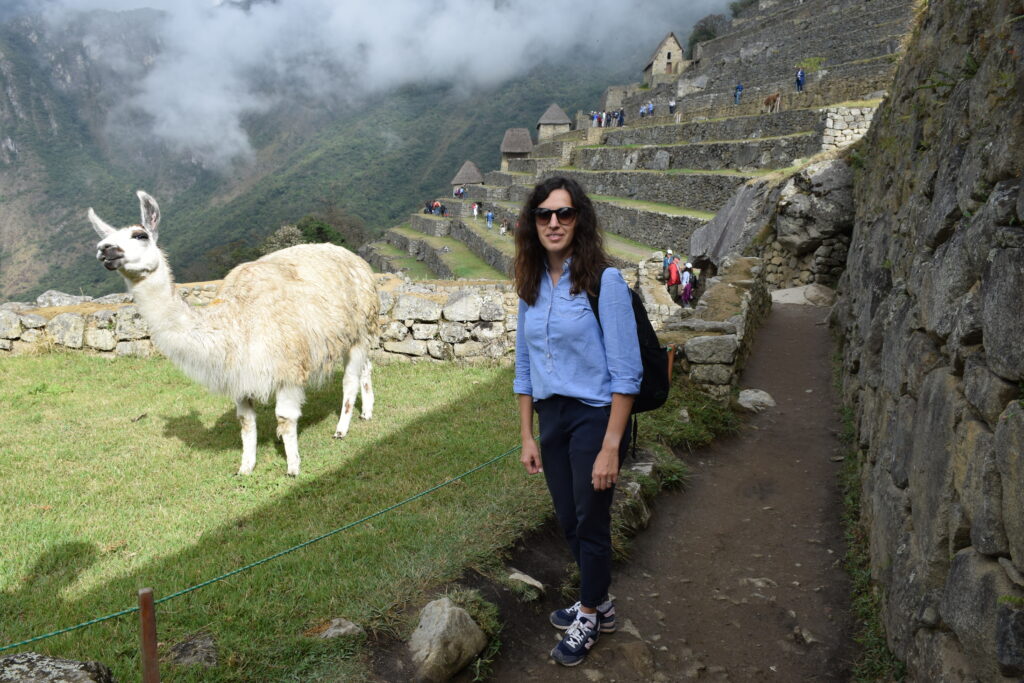
Seeing Machu Picchu lived up to every bit of its hype. After a full day exploring, we headed back by train to Ollantaytambo exhausted but awestruck.
Day 8 – Getting to Salineras de Maras & Moray
The next day we arranged a driver to take us around the Sacred Valley, stopping at Salineras de Maras, Moray ruins, and Chinchero on the way back to Cusco.
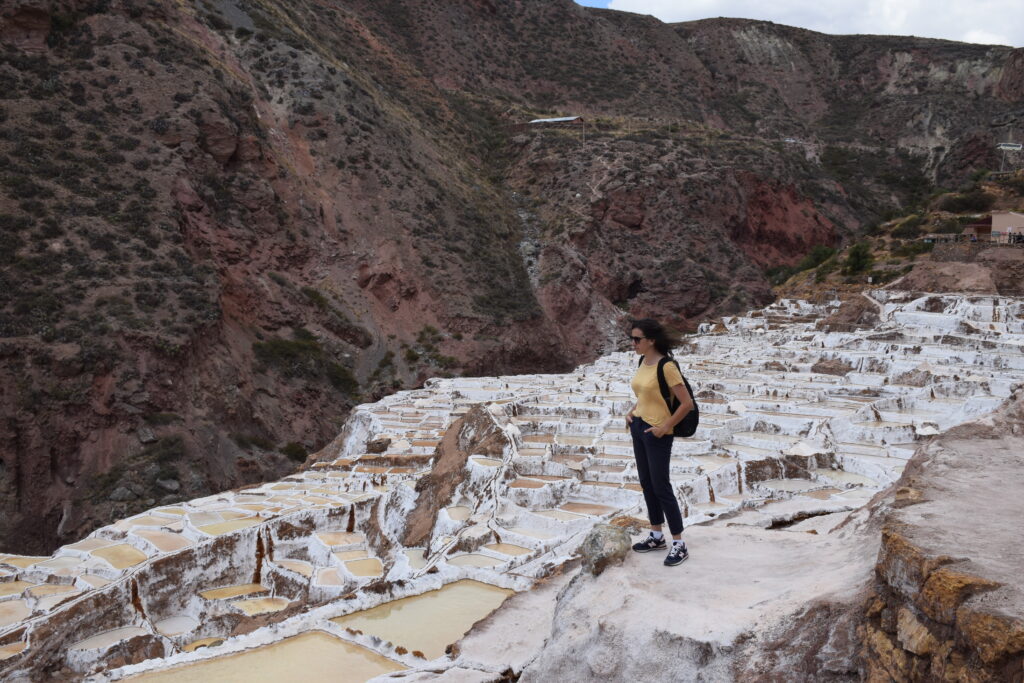
Stop at Salineras de Maras
Our first stop was Salineras de Maras, the Inca salt pans dating back to pre-Inca times. The contrast of the white salt against the green mountainsides was stunning.
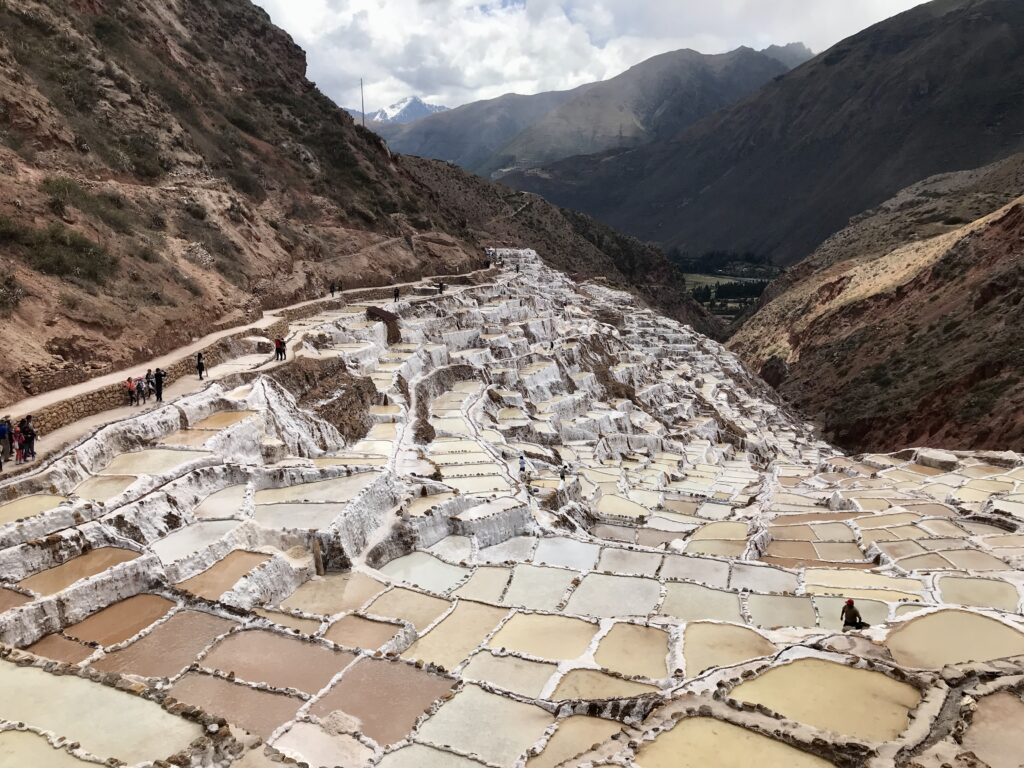
We picked up some salt to bring home with us!
Vsiti Moray with kids
Next, we visited the concentric agricultural terraces of Moray, thought be an Inca experimental agricultural site.
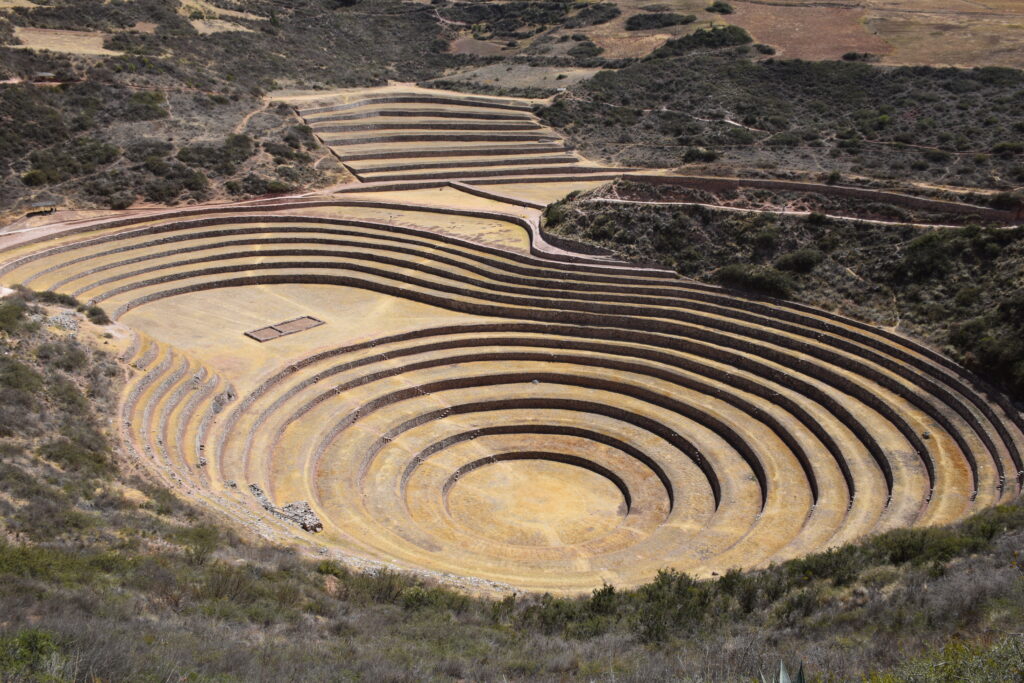
The terraces at Moray are circular in shape and vary in size, with the largest terrace measuring about 30 meters deep. The Incas used these terraces to test different crops at different altitudes, creating microclimates that allowed them to grow a wide variety of crops. You can explore the site and learn about the history and significance of this ancient agricultural laboratory.
The terraces are incredibly well-preserved, and the views of the surrounding mountains and valleys are breathtaking. These deep, circular terraces amongst the mountains were one of Sophia’s favorite stops of the trip!
Explore Chinchero, Peru
Our last stop was the colorful Andean town of Chinchero, where we luckily stumbled upon a vibrant local festival with traditional music, costumes, and food.

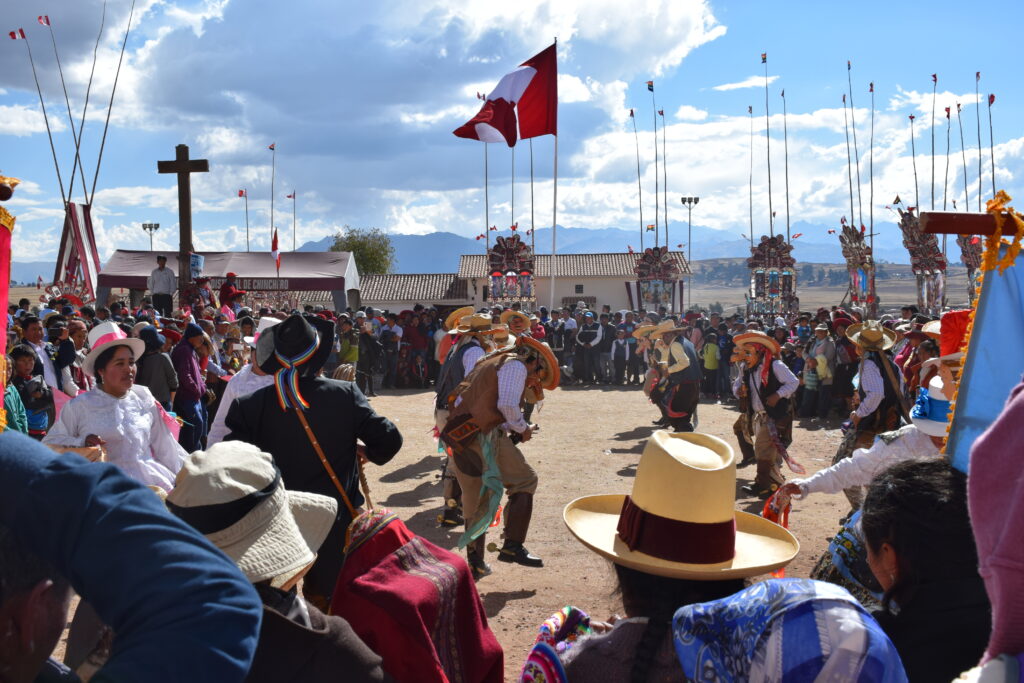
It was the perfect farewell to the Sacred Valley before returning to Cusco.
Day 9 – Getting back to Cusco
After over a week of nonstop exploring, hiking, and traveling, we dedicated a whole day to simply recovering and resting in Cusco. No big tours or activities, just wandering the charming city.

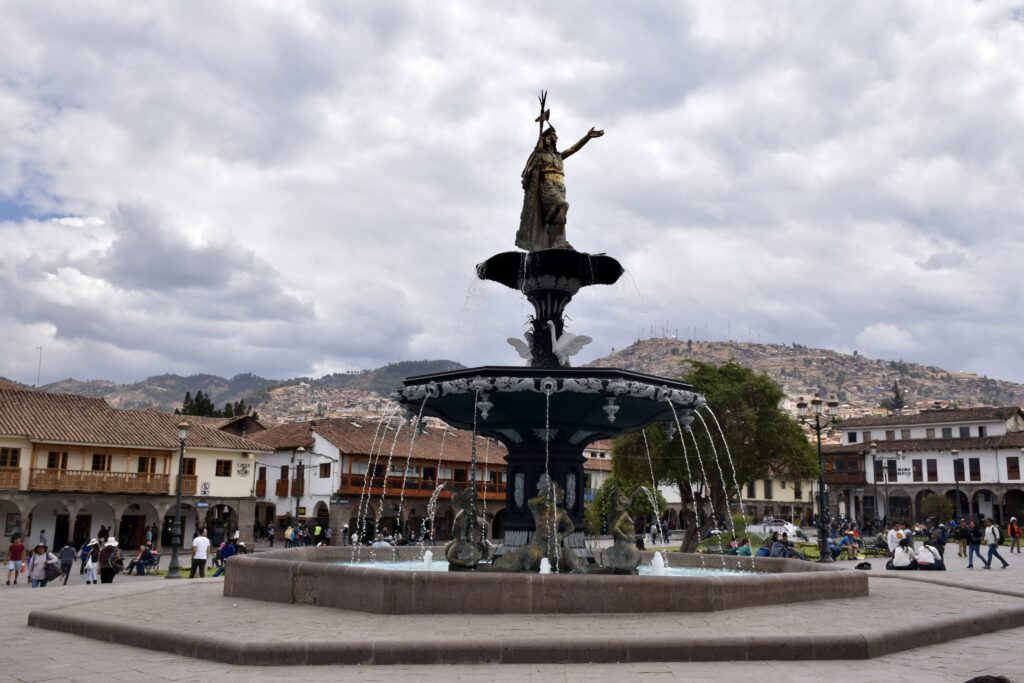
We checked into our hotel, picked up our stored luggage, and had a slower pace with leisurely meals, coca tea breaks, and finding the perfect souvenirs to bring home.
We highly recommend trying the chilled purple corn juice called Chicha Morada while in Cusco.
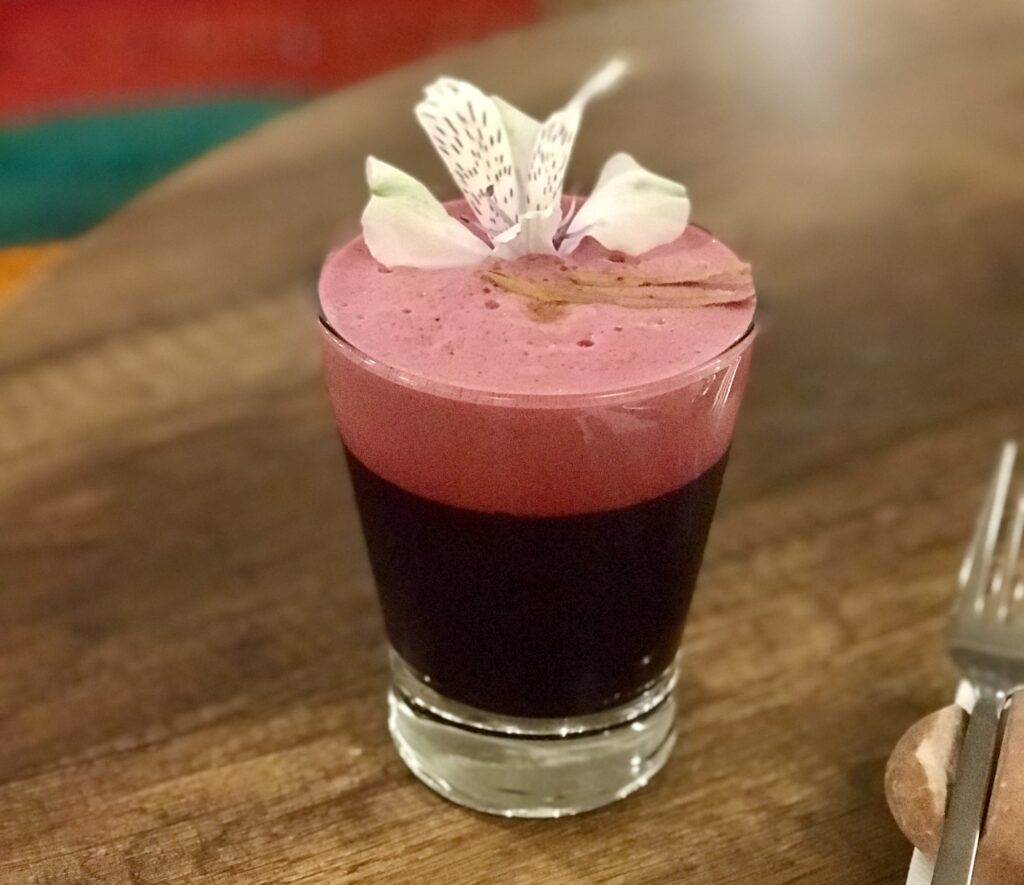
It’s a refreshing and energizing local specialty made from purple corn and fruit. Just what we needed before our next big adventure!
Day 10 – Drive from Cusco to Limatambo
The next phase of our Peruvian journey was driving to Limatambo at the base of Mount Salcantay. We rented a car from Europcar (they mostly had manual transmission cars, so we had to wait for an hour for someone to return a car with an automatic transmission) to handle the mountain roads.

The drive itself was beautiful and took us about 2 hours, passing through small villages and winding mountain roads with epic views of the Andes landscapes.
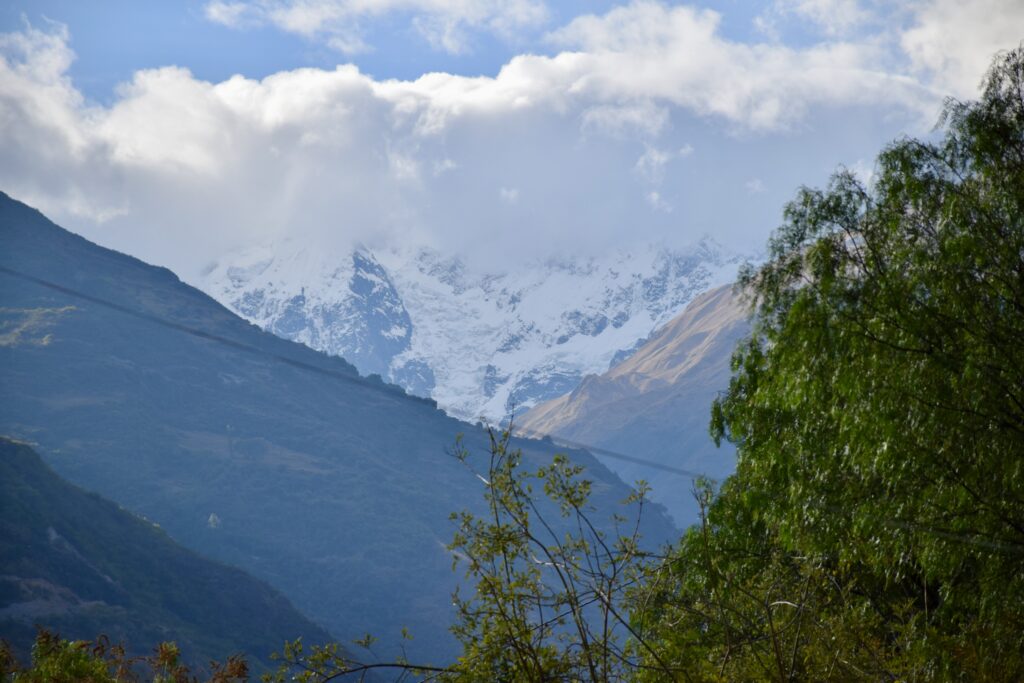
Staying at Lodge Reposo del Angel
We arrived at the remote Lodge Reposo del Angel, a small family-owned lodge with cozy rooms and an unbelievable view of Salcantay Peak.
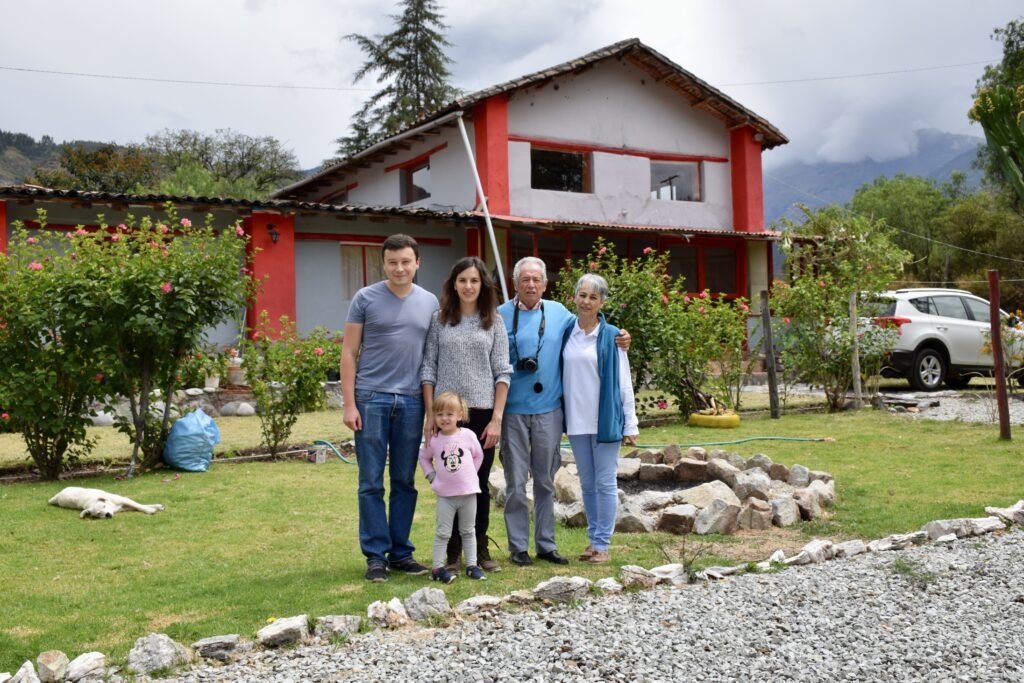
Reposo del Angel is a unique place to stay in a remote location in the mountains, surrounded by beautiful gardens maintained by the owners. Even though the road to the hotel wasn’t marked on the map, the owner’s son was kind enough to provide turn-by-turn guidance (via WhatsApp) on how to get there, which was extremely helpful.
We chose a meal service and were delighted with the organic dinner and breakfast prepared by the hotel owners. The produce was fresh and grown on-site, including oranges, avocados, and papayas, as well as free-range eggs laid by their chickens. The owners were friendly and accommodating, and the location was convenient for our trip to Lake Humantay, only an hour from Soraypampa camp.
Day 11 – Hike to Laguna Humantay with kids
This day’s highlight was trekking to the stunning Laguna Humantay, a crystal clear turquoise lake at the base of Humantay glacier. After a short drive to the trailhead, we began the challenging uphill hike to the lake.

Trailhead: Not far from the Soraypampa camp
Round-trip Distance: 4 miles
Time: 4 hours
Level: Strenuous
Elevation: Start at 12631 ft., gain 1,450 ft.
The hike was strenuous at over 13,000 ft elevation, especially with a 3-year-old in the backpack! But we took frequent breaks and kept a steady pace. And the payoff at the top was so worth it! Overlooking the glacial lake with the Humantay peaks towering around us was truly magical—an experience of a lifetime.
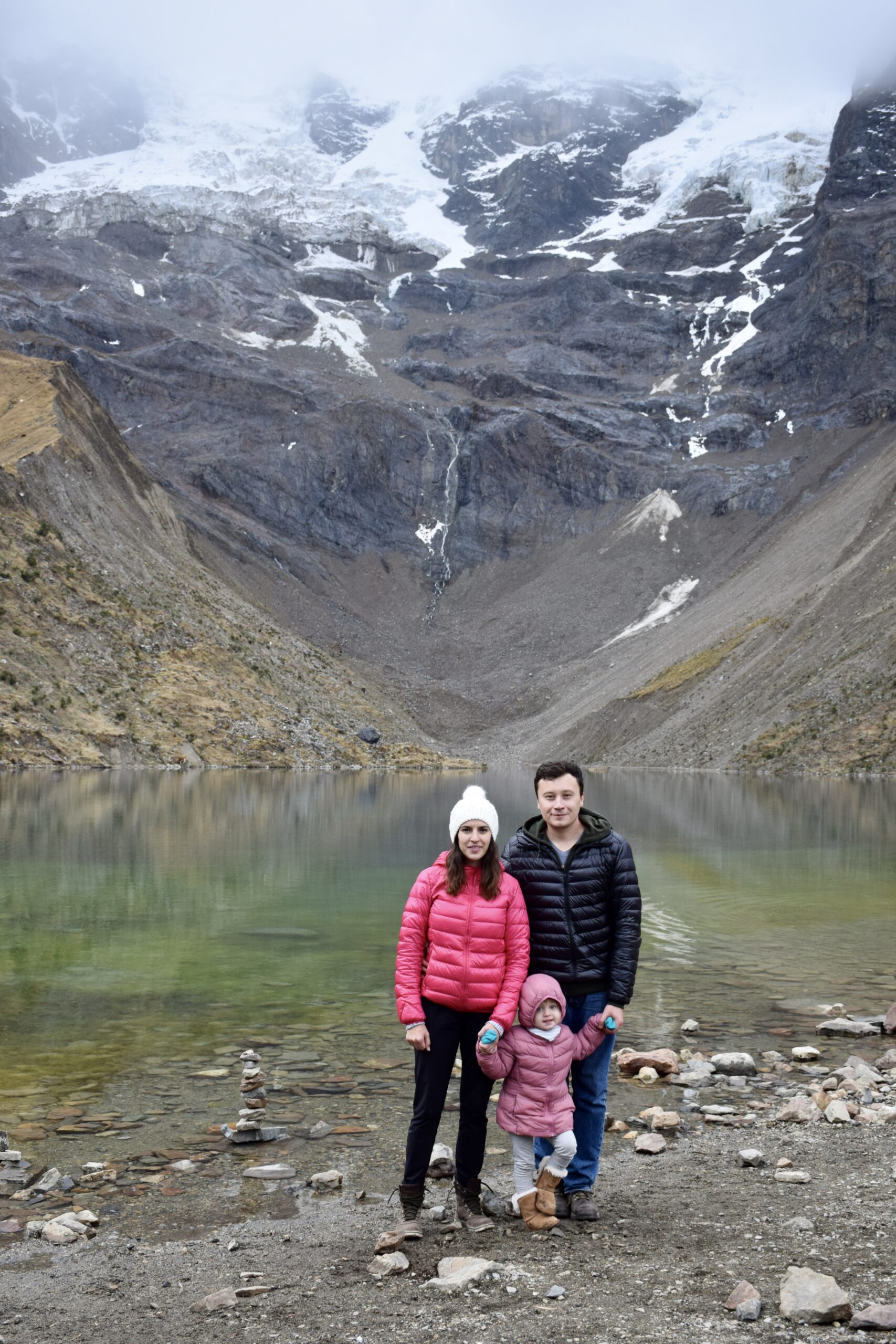
After relishing the views and catching our breath, we headed back down to Limatambo for a well-deserved rest after the epic hike.
Day 12 – Return to Cusco
On our last morning, we drove back to Cusco to return our rental car and spend our afternoon in Cusco before catching an early flight to Lima the following day.
💡 Good to know
If you’re visiting Cusco, a visit to the San Pedro Central Market is a must. This bustling market is located in the heart of the city and is a hub of activity for locals and tourists alike. As you wander through the market, you’ll be greeted by an array of sights, sounds, and smells.
From colorful stalls selling fresh produce to vendors offering traditional textiles and handicrafts, there’s something for everyone here.
Day 13 – Flight to Lima and SFO
In the morning, we took a flight to Lima. Although sad to leave Peru, we felt fulfilled, exhausted, and grateful after squeezing every drop out of our 12 days in this incredible country!
We returned home with suitcases full of beautiful memories, endless photos, and, of course, some Peruvian salt to share with friends and family.
Bottom line
This 12-day Peru itinerary with kids offers the perfect balance of iconic sights, cultural experiences, and family-friendly activities. From exploring Lima’s food scene to walking among ancient Incan ruins in Cusco and witnessing the magic of Machu Picchu, this trip was unforgettable for both adults and children. Whether you’re planning your first visit or dreaming of returning, use our experience to help craft a meaningful, stress-free adventure through Peru with your family.


